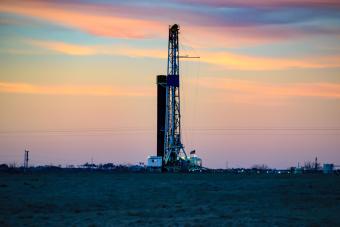
Requiring 1,500 feet between oil and gas operations and buildings or waterways would have minimal impacts on oil and gas availability, according to a new study from the University of Colorado Boulder and Colorado School of Mines.
The study, published in an upcoming edition of Energy Policy, also found that impacts on the oil and gas sector escalate dramatically as the setback distance increases to 2,500 or more feet from sensitive locations, homes and other buildings.
“The steep increase in costs at certain setback distances was remarkable,” said Daniel Kaffine, study co-author and professor of economics at CU Boulder. “In some counties, increasing the setback just 500 feet had major consequences in terms of accessible oil and gas.”
The first-of-its-kind study was co-authored by Kaffine; Sean Ericson, a CU Boulder economics graduate student; and Peter Maniloff, an assistant professor of economics at Colorado School of Mines. Researchers used geographical information systems (GIS) and publicly available data to measure the impact of increasing oil and gas production setback distances on oil and gas availability. They specifically looked at Colorado as a case study.
“Oil and gas setbacks are a controversial way of keeping households safe. Some environmental groups have advocated increasing setbacks to increase health and safety,” said Maniloff. “What we show in this paper is how the costs stack up as those setbacks increase.”
Colorado law currently mandates oil and gas setbacks ranging from 500 to 1,000 feet, depending on the type of resources or developments nearby. The researchers found Colorado would lose about $500 million in annual resource revenues, roughly 0.1% of the state’s gross domestic product, by requiring oil and gas setbacks of 1,500 feet. With a setback distance of 2,500 feet, as a 2018 Colorado ballot measure proposed, costs would increase to $4.5 billion.
“Colorado’s Proposition 112 ballot initiative was the main catalyst for looking into this, particularly when we realized that existing research on setbacks was extremely limited,” said Kaffine.
Colorado Proposition 112 failed at the ballot box, but the idea of increasing setbacks isn’t dead. The Colorado Oil and Gas Conservation Commission is considering a new round of regulations after a recent reorganization, which could change setback distances or introduce new considerations, such as environmental impacts on neighbors.
“Setbacks offer a way to balance health and safety concerns against foregone economic benefits from oil and gas development. This work can help policymakers make better decisions for Coloradans,” said Kaffine.




